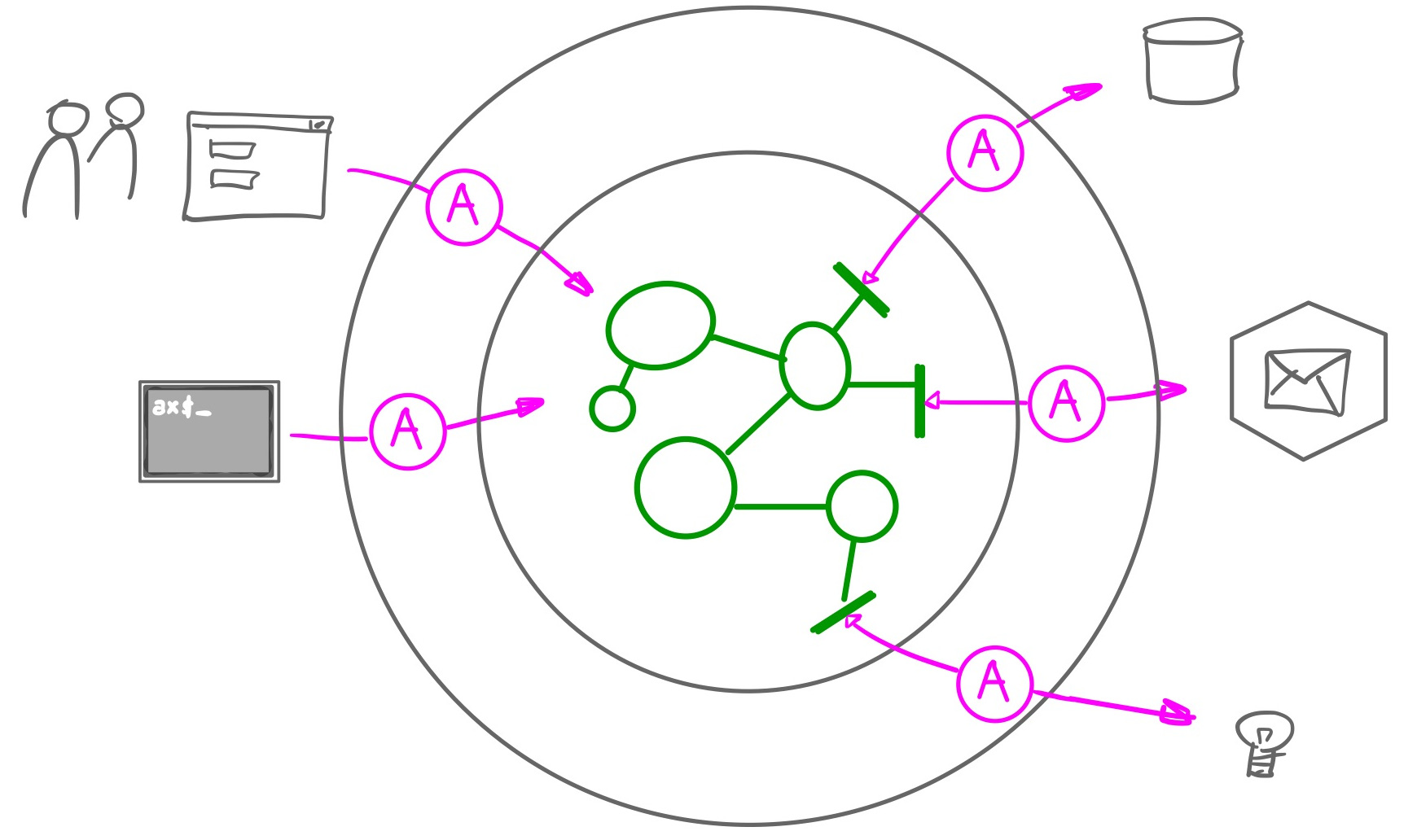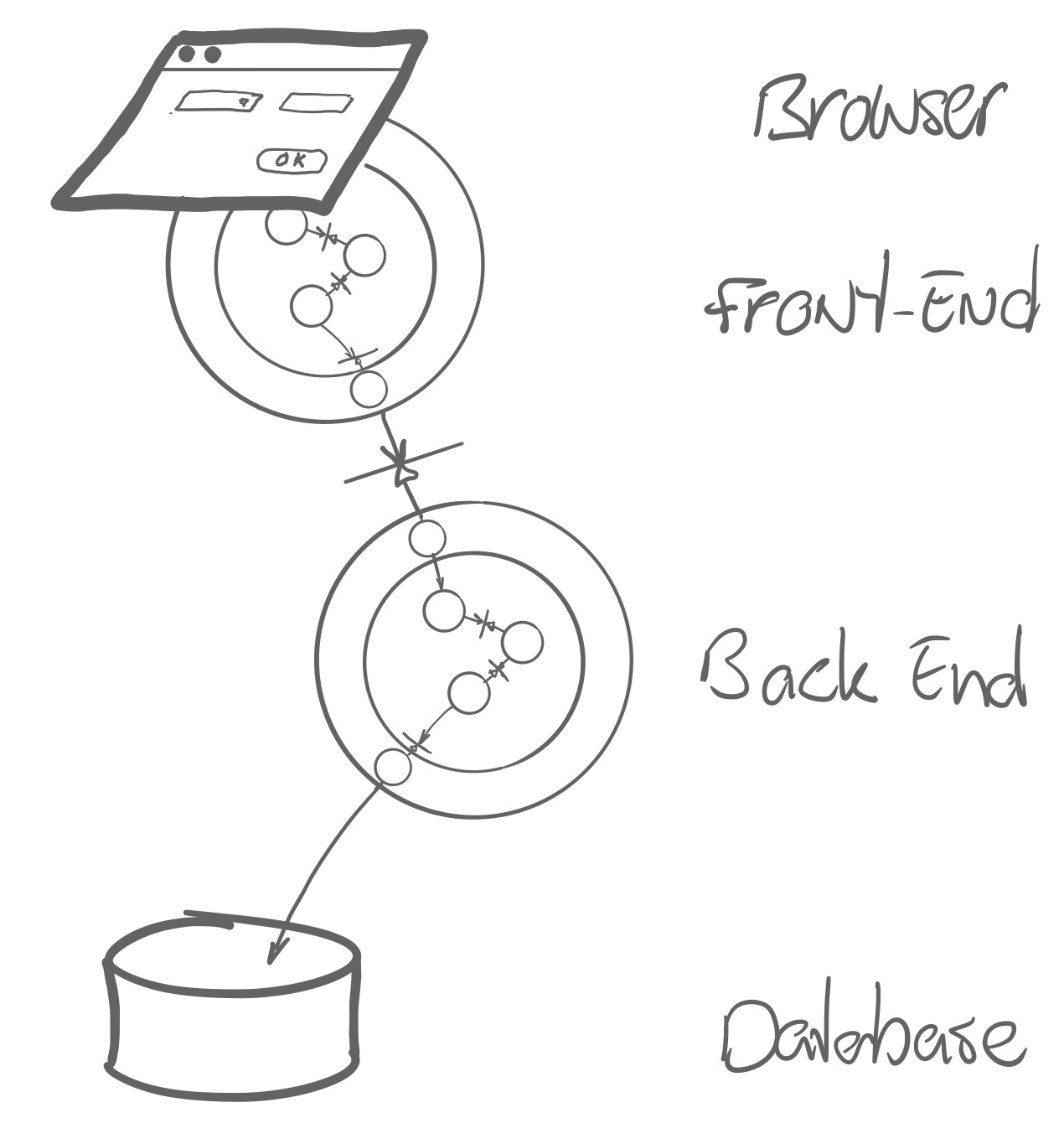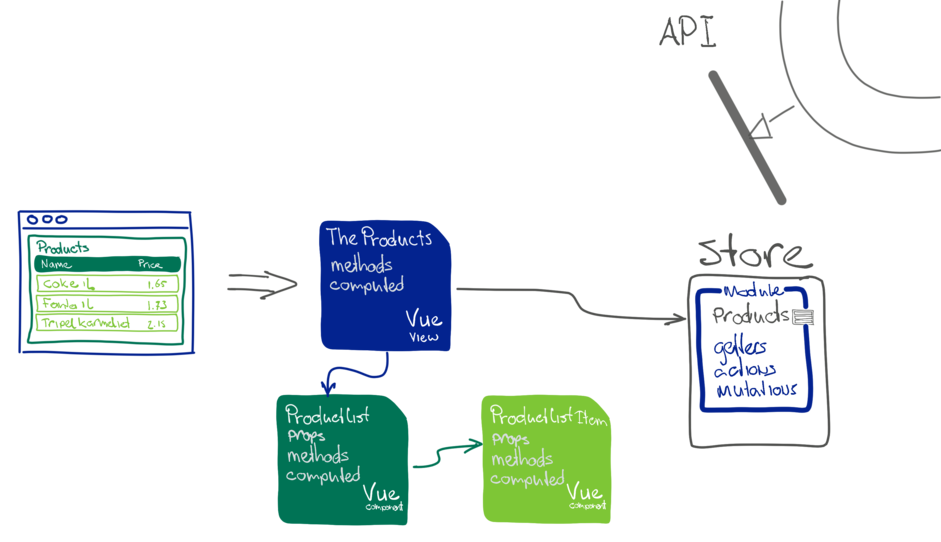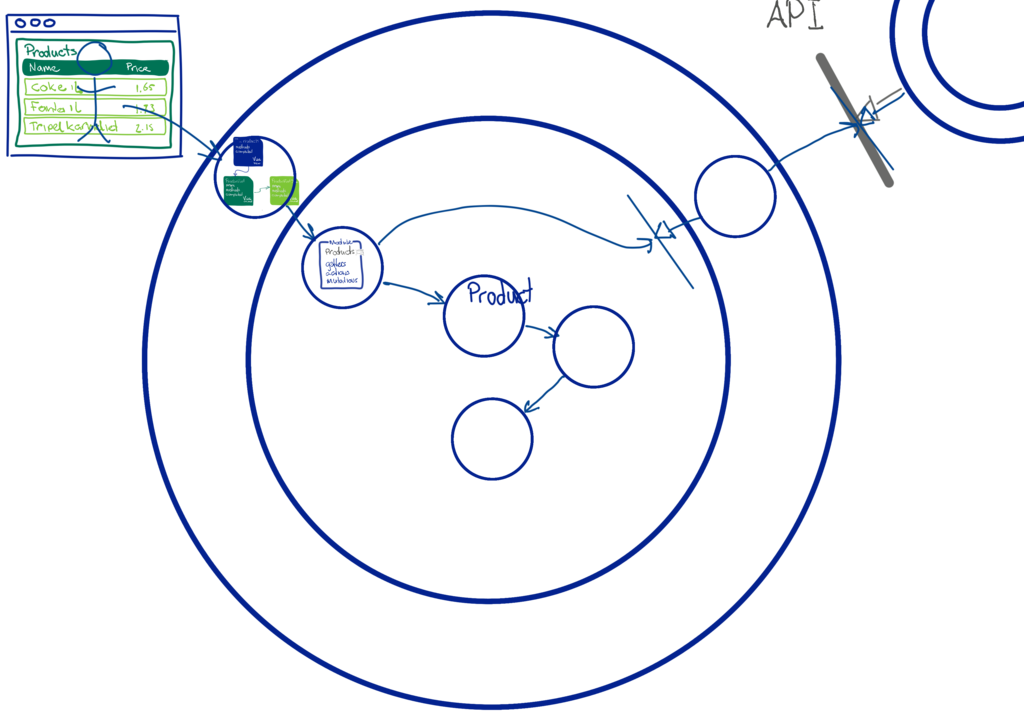Front ends tend to start out simple, often as ‘just’ a form or a grid showing data that comes from a backend. It looks like ‘just’ a visual layer on top of backend APIs. When a front end evolves and grows, it inevitably becomes more complex. We then need to take a good hard look at the UX/UI and overall architecture.
To mention a few:
- guide users through specific flows, e.g. anonymous users vs admins, variations in data that trigger different scenarios, while the backend APIs are flow agnostic
- provide timely feedback on input, to prevent mistakes
- manage expectations with feedback so that our users continuously know what is happening and what is expected of them, e.g. spinners when waiting, check marks for correct input, specific validation feedback
- don’t distract or confuse, e.g. hide buttons for actions that are not possible yet, hide functionalities not available to the current user role
- combine data from multiple APIs and present it in a coherent way
- present data understandably, as some APIs might not match the user’s view of the world 100%
- move a concern over to the front end, for instance implement a shopping basket in the front end, to prevent extra complexity in the backend for managing shopping basket state
Hexagonal Architecture to manage complexity
Having applied Hexagonal Architecture to back end components, well-structured monoliths and desktop client applications, we have found that thinking hexagonally helps to keep complexity manageable.

It allows us to focus on domain logic and business rules and it facilitates independent evolution of different services/components. It also allows for better automated testing of all these concerns. Hexagonal Architecture distinguishes:
| Port | set of interactions with outside world |
| Adapter | translates from and to outside world |
| Domain | model of the domain, independent of frameworks; in the language of our stakeholders |
For our current project, the online Agile Fluency® Diagnostic, we are developing a Vue.js based frontend, a Python/Flask based backend and a relational database. To manage complexity and facilitate evolution, we decided to apply hexagonal architecture to both frontend and backend. We will focus specifically on how this worked out for the Vue.js frontend and what decisions we took, and why.
Let’s zoom out and see our application as a network of connected hexagons:

Hexagons applied to front end
So in front end code, a number of concerns come together: user interface code, integration with the UI library , validation & feedback logic, state management, user flow logic, backend API integration.
What if we looking at a front end component through a hexagonal lens? What is the domain, what are the ports, what are the adapters?
Let’s look at a sample Vue.js and Vuex based front end application, a web shop we developed as an exercises in our courses. We have a few UI components, like a ProductList. We have a store that can retrieve the available from some backend API and which holds the current list of products.

Ports
- the UI is our the primary port through which users drive the front end application
- interactions with other services like backend components are our secondary ports
- any intents for which we need browser functionality are also ports, like local storage or alerts
Primary adapters
We see the Vue.js based UI components as primary adapters. This includes the component code, its HTML and its CSS. These UI components are heavily dependent on Vue.js and related libraries.
This adapter code will have its own automated tests, which is greatly facilitated by the Vue.js test library. It allows us to run all UI component tests in seconds. Our front end is about domain concepts (facilitators, diagnosticSessions), we get these from backend APIs but we still translate these to our own classes in the front end code to decouple the front end from back end API evolution (we want to facilitate independent evolution of our different components and their APIs) but also to safeguard from interesting vulnerabilities that could occur when we just base our code on the objects coming in from the backend; backend API classes/functions are our secondary ports
Domain
So what is ‘domain logic’ in this case? Front end components run in the user’s browser - an untrusted environment, so backend components are responsible for business rules, with the intent of ensuring correctness and consistency. In a front end, we do have domain related logic related, but its intent is to facilitate, guide, enable the user: view logic or view models.
The state and store objects are part of our domain; they sit on the edge of the domain and provide an interface to the UI components. In this way, they act as a Facade towards the domain code.
Our Agile Fluency Diagnostic front end knows about domain concepts like facilitators and diagnosticSessions. We get these as data from backend APIs, but we still translate these to our own classes in the front end code to decouple from APIs and facilitate independent evolution of components and their APIs.
Secondary adapters
Secondary adapters contain the code that encapsulates API calls and translates the data to our domain.
We created adapters for the interaction with backend APIs. They act as Repositories in our domain, like a ProductRepository that offers an allAvailable() function to get all available products. We create these adapters independently using test driven development.
In our online Agile Fluency Diagnostic application for instance, we have an ApiBasedSessionRepository that offers all and byId to the domain, to get all sessions or a specific one.
1
2
3
4
5
6
7
8
9
10
11
12
13
14
15
16
17
18
class ApiBasedSessionRepository {
...
_toDiagnosticSessionSummary (data) {
return new DiagnosticSessionSummary({
id: data.id, team: data.team,
date: data.date, isOpen: data.is_open, isTest: data.is_test })
}
all () {
return this.axios.get('/diagnostic-sessions')
.then(response => response.data.diagnostic_sessions.map(
this._toDiagnosticSessionSummary))
}
byId (sessionId) {
...
}
}
The backend API adapters also take care of mapping from/to our domain objects, like the _toDiagnosticSessionSummary function in the example. We make this mapping explicit, to:
- allow independent evolution of different components
- represent the domain objects (resources) explicitly in our front end code, to make it easier for ourselves as developers
- shield against malicious JS stuff coming in
- allow contract based testing
The application through a Hexagonal lens
If we look at our application through a Hexagonal lens, we see domain objects (plain Javascript) in the center, state objects at the boundary, Vue.js based UI components as primary adapters and repositories as secondary adapters encapsulating interaction with backend APIs.

So we have quite some adapter code (all the UI components) in our front end. Some numbers for the online Agile Fluency Diagnostic application:
| domain / view logic | 37% |
| UI component adapters | 53% |
| API adapters | 9% |
| main.js | 1% |
Zooming in on the domain
How do we structure our view domain? Instead of putting all logic in the (Vuex) store objects, we introduce domain objects - plain Javascript/Typescript classes - to represent concepts and their responsibilities. Store objects delegate as much as possible to plain Javascript domain objects.
These domain objects don’t tend to be very responsibility-heavy. They start out as data classes and gain some logic along they way. We end up with simple objects that are very easy to understand and well testable.
We also tend to move logic, e.g. validation, from the UI components to domain objects, which makes our UI components simpler and our logic easier to test. We will elaborate this in a future post.
Consequences
Like we said before, Hexagonal Architecture is an architectural pattern, not a best practice. It comes with trade-offs and consequences:
Separating these concerns allows us to decouple the view logic from the UI structure, styling, and details. It allows the front end to evolve independently from the backend.
Using the Hexagonal lens helps us with WTPW - What To Put Where: a new validation rule for adding a facilitator? put it in the NewFacilitator domain object; better visualization of password strength? in the UI component; do we need to map a backend API peculiarity? in the API adapter.
Mapping data in the API adapters comes with a bit of extra effort of writing the mapping code. This is a trade-off and is usually worth it in our experience.
Adding a new feature, like adding a new property to Facilitator, can result in the code smell called Shotgun Surgery: we need to make changes in several places, in the UI component (add a new text field), in the domain (extend the domain object, add a validation rule), in the adapter (map the new property to/from the backend API). Again a trade-off, the changes themselves tend to be small, so we think the price is worth paying here.
Applying the Hexagonal lens also triggers some follow up questions:
- what to do with the logic in our UI components, like disabling a button when the input is not valid?
- how to structure the view domain in detail?
- structuring the core of the hexagon: how can we make the domain part more modular?
Keep an eye on our blog, we will dive deeper into these questions and our experiences.
References
- Growing Object Oriented Software guided by Tests book by Steve Freeman & Nat Pryce.
- The original article on Hexagonal Architecture by Alistair Cockburn
- Instead of UI Library, feel free to read browser APIs, Frameworkless Front-End Development) is a solid introduction to using Vanilla JS.
- The first post in this series
- Interview with Alistair Cockburn part 1 and part 2, which includes the history of Hexagonal Architecture (question #2 of part 1)
Editing - Willem van den Ende
Updated on 10-10-2021: replaced dead history link
